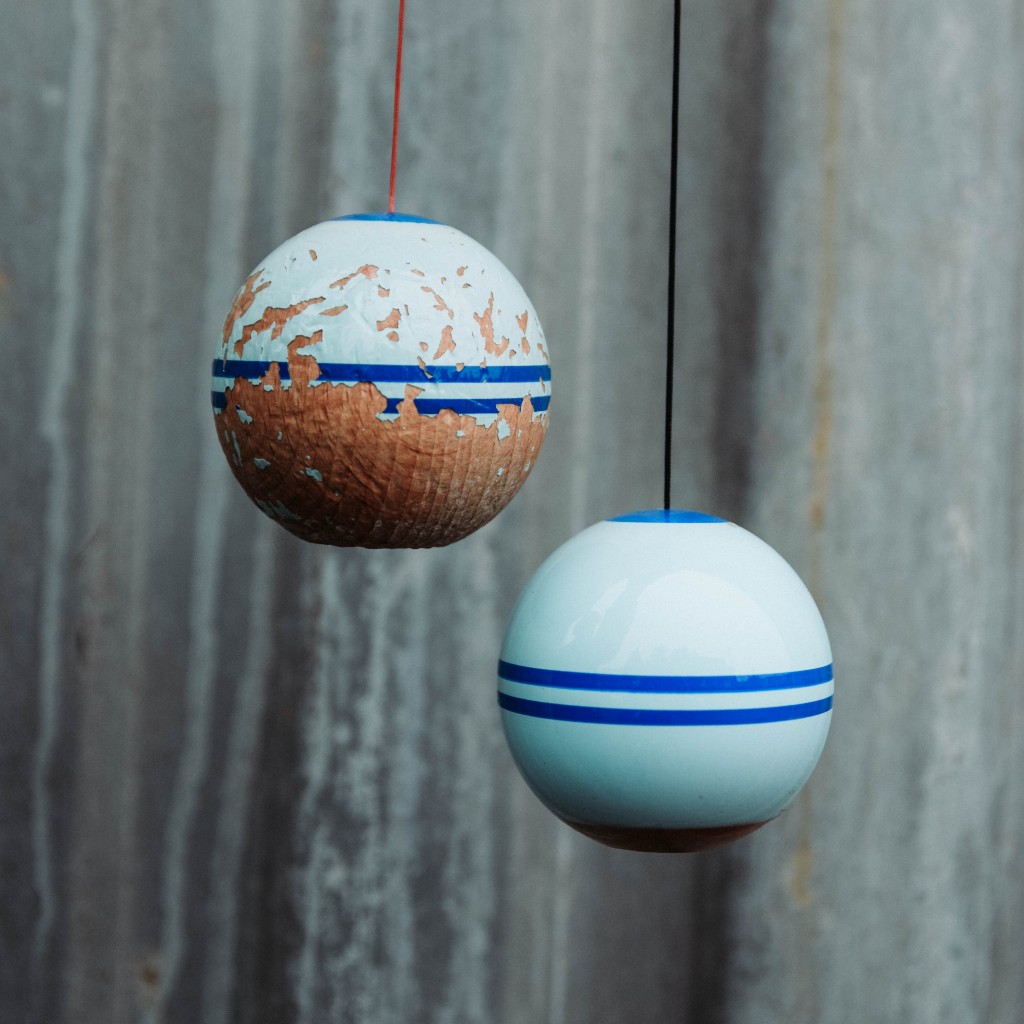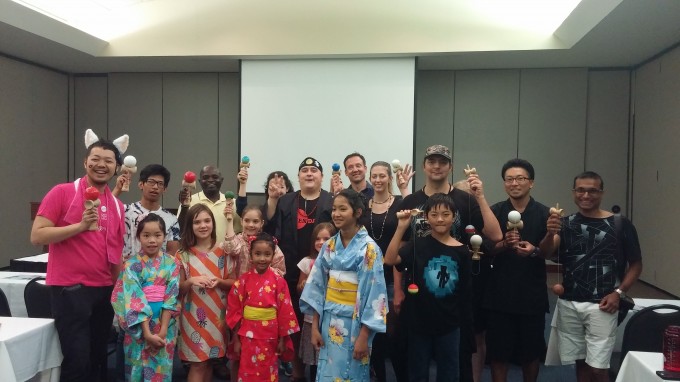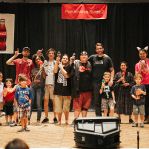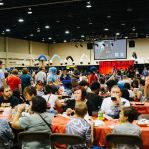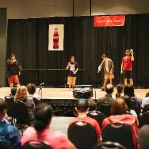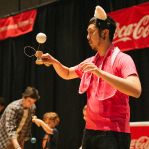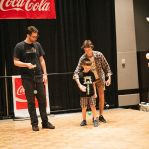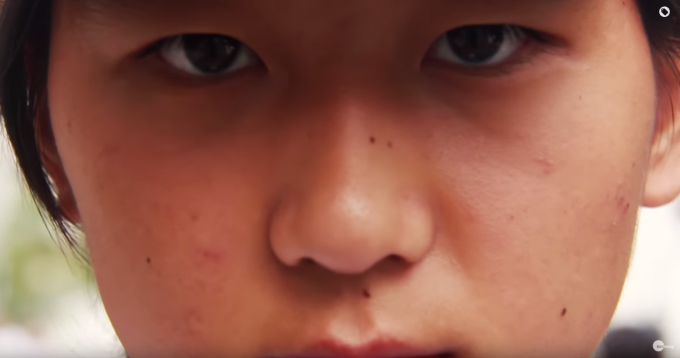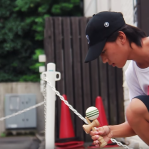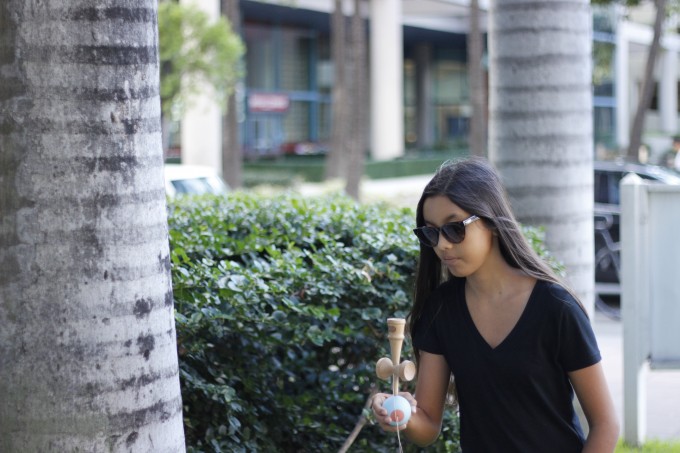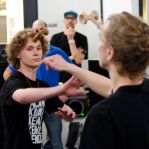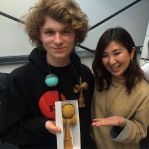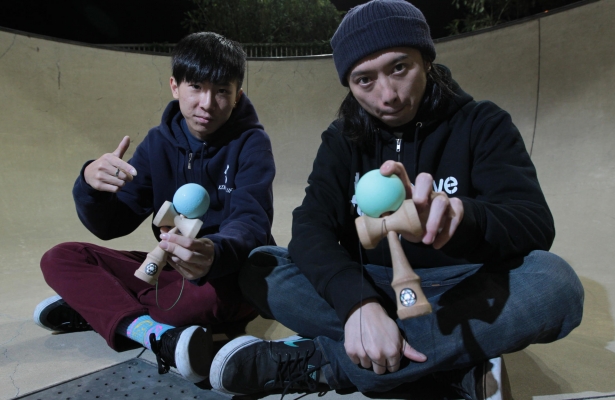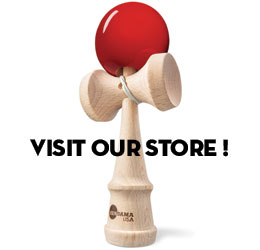Around 10 years ago, skateboarder Smore Chan Chung-yin picked up a Japanese toy made of a wooden spike and a ball on a piece of string, and started playing with it at a skate park after watching a fellow skater do some tricks. Chan was immediately hooked and couldn’t put the toy down for the next three hours.
“I was playing like crazy and even when I left for dinner, I was still playing with it. I didn’t want to give it back. I had to give in and buy a kendama of my own.”
The kendama is a toy that is similar to cup and ball; the only difference is that the kendama has three cups, a wooden spike, and the ball has a hole in it. Players try to flick the ball back onto the spike, but it’s become much more than that, as players try to do tricks shots like landing the ball on each of three cups attached to the spike, toss the toy in the air and catch it again before getting the ball on the spike, balance the spike on top of the ball, or even holding the ball and balancing the spike with just the string. It’s not unlike how people have taken the yo-yo and created all kinds of tricks with it.
Chan has been honing his kendama skills ever since he discovered it. He has won several competitions, including the first ever competition in Hong Kong in 2006 and an international video competition with another player in 2007. The 26-year-old now works as a tour guide, but he founded Pak Fuk Kendama in Fanling, where he sells kendama products and coaches new players.
Kendama is steadily growing as a sport. The US has a team of professional players, and even Pak Fuk Kendama in Hong Kongsponsors seven players, meaning those players get free kendamas and coaching. Sunny Wong, a bartender who helps Smore Chan run Pak Fuk Kendama, says there are around 200 enthusiasts in Hong Kong who practise every day, and that it is a serious discipline.
“The Japanese have judo, ken-do (the art of sword fighting), kado (ikebana, or flower arrangement) and chado (tea appreciation.) For the serious players, kendama is just like one of those pursuits.”
Some people even make their living from kendama, like Alex Smith, a player on the US team who is also a woodworker and makes his own kendamas; and Jake Wiens, another US player who also does a lot of the film production and editing for the team.
People like them are rare though, and Hong Kong doesn’t have a kendama scene like the US just yet, but more and more players are following in Chan’s footsteps and taking kendama seriously.
Wu Tsz-ki is 14 and she’s one of the sponsored players with Pak Fuk Kendama. She only started playing with the kendama in May 2014 after she saw it on Instagram, but she practises every day and spends at least an hour each weekend working on new tricks. In October, she entered a competition and came fourth out of around 50 players. She says her parents are still surprised that she hasn’t gotten tired of this toy already, but she says she’s also hooked.
“Don’t underestimate this toy. It may not look very athletic, but it’s very effective in working up a sweat and honing your arm muscles,” she says. “My reflexes have certainly improved. My accuracy in swatting mosquitoes has gone from 50 per cent to 80 per cent.”
Wing Tang kin-wing, 16, is also one of the Pak Fuk Kendama players. He started playing two years ago, and back in mid-December, he entered the TKA Kendama Contest in Taiwanand beat all the other players from Japan, Korea, and Taiwan to win the timed contest, where the players try to do as many difficult tricks as they can within two minutes.
Chan says his group performs and hosts workshops at schools and universities. He says his next goal is to organise parent-child kendama classes.
Zack Yourd, a professional player for the US team and recent college graduate, wants to develop a curriculum to introduce it to schools in the US. The 22-year-old started playing with the kendama around eight years ago and he says whenever people ask him what the kendama is, he’ll show them a few tricks and they are always impressed.
“I have yet to see somebody who’s like, ‘Oh that’s stupid.’”
Yourd travelled across the US with the team, and he says he was struck by how enthusiastic the players were.
“As soon as we pulled into the parking lot, there would already be hundreds of people waiting, and they were just screaming.”
He also designs his own kendamas with different designs and types of wood, and he gets royalties every time one of those is sold. He enjoys brewing tea and coffee, so his latest model features engraved tea leaves and coffee beans. One of his kendamas costs around US$35.
“As kendama becomes bigger, it’s becoming more of a possibility to live off kendama and make it your profession. Some people that I know are doing that and it’s incredible. Right now though, it is kind of hard to make your living from competing. You would need another job.”

 https://www.youtube.com/watch?v=U2gWa30BEBM
https://www.youtube.com/watch?v=U2gWa30BEBM



